More trade war tariffs have been collected under Biden than Trump, but US tariffs remain among the lowest in the developed world. Meanwhile, gold prices hit new highs. Each week, the Syz investment team takes you through the last seven days in seven charts.
1. Global Central Banks Have NEVER Been Buying So Much Gold Before
Gold keeps trading at record highs on the back of increasing demand by central banks.
Indeed, central banks acquired 1,045 tonnes of gold in 2024, marking the 3rd consecutive year of purchases surpassing 1,000 tonnes. Over the last 3 years, central banks bought more gold than in 6 years before 2022.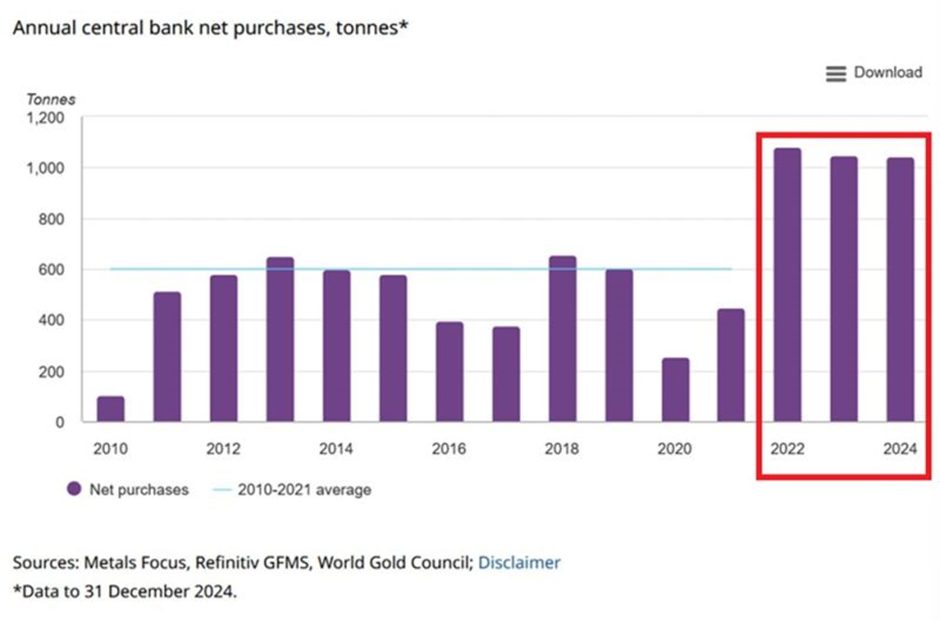
Source: Global Markets Investor
2. US Tariffs Are Among the Lowest in the Developed World
Believe it or not, but the US has one of the lowest tariff rates in the developed world. See chart below courtesy of DB.
NB: Most Favoured Nations (MFN) Weighted Mean Tariff is the average of most favored nation rates weighted by the product import shares corresponding to each partner country.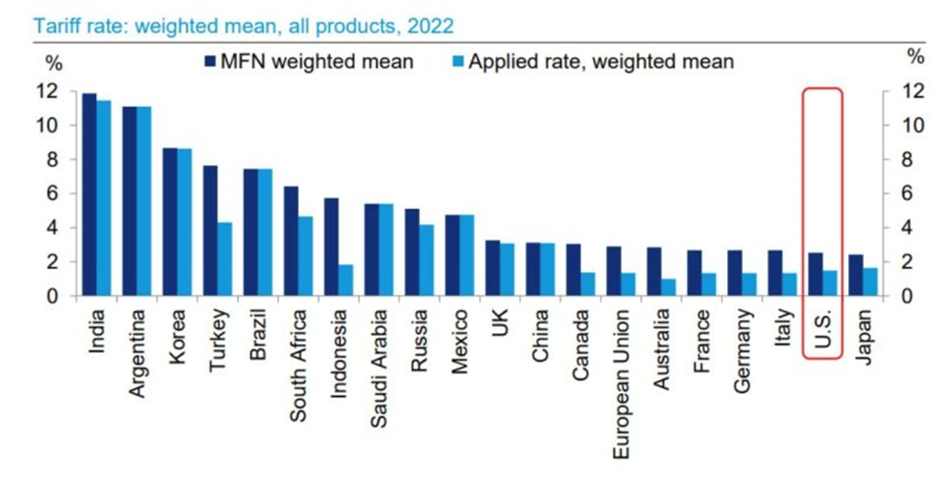
Source: DB
3. More Trade War Tariffs Have Been Collected Under Biden Than Under Trump
The chart reveals an intriguing trend: while trade war tariffs are a cornerstone of Trump’s administration, it is under President Biden that collections have reached even higher levels. With $144.2 billion collected during Biden’s term compared to $89.0 billion under Trump, most of these tariffs come from Section 301 measures targeting China.
This highlights how, despite receiving less media attention than during Trump’s presidency, tariffs remained a key element of US trade policy under Biden.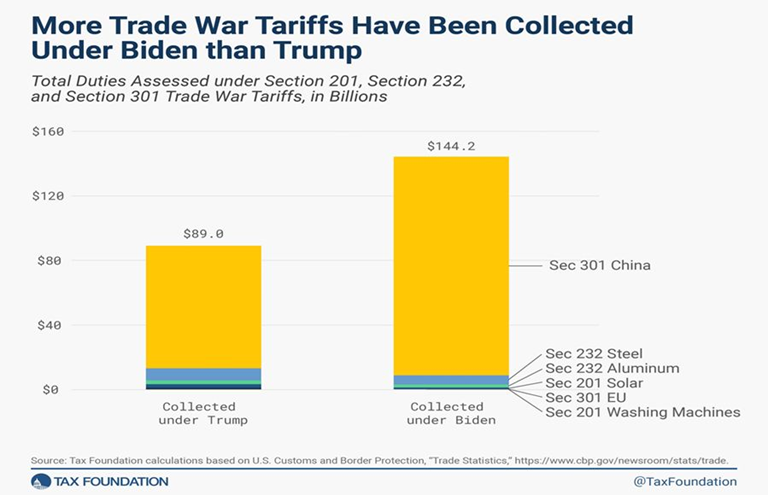
Source: Tax Foundation
4. Here’s Why Canada and Mexico Reacted Swiftly
The chart below - courtesy of LSEG - explains why Canada and Mexico reacted swiftly after Trump imposed 25% tariffs on imports.
The graph highlights their significant reliance on the US market, with around 80% of their respective total exports directed toward the United States. This heavy dependence made swift reactions crucial to protect their economies and mitigate the impact of such tariffs. In comparison, other nations like China and Germany are far less dependent on the US for exports, enabling them to absorb the impact of such trade policies more effectively.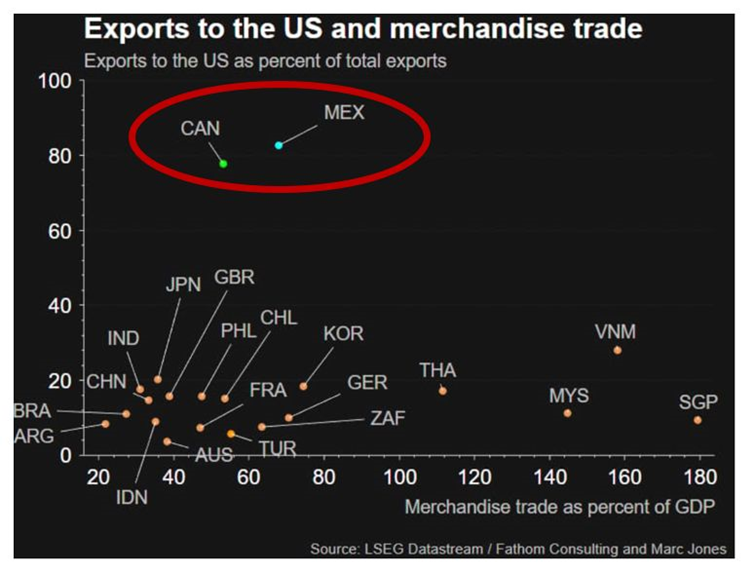
Source: LSEG Datastram
5. The Art of Stock Picking
A majority of stocks (59%) underperform Treasury bills over their lifetime and more than half end up having a negative cumulative return. “Don’t look for the needle in the haystack. Just buy the haystack.” - Jack Bogle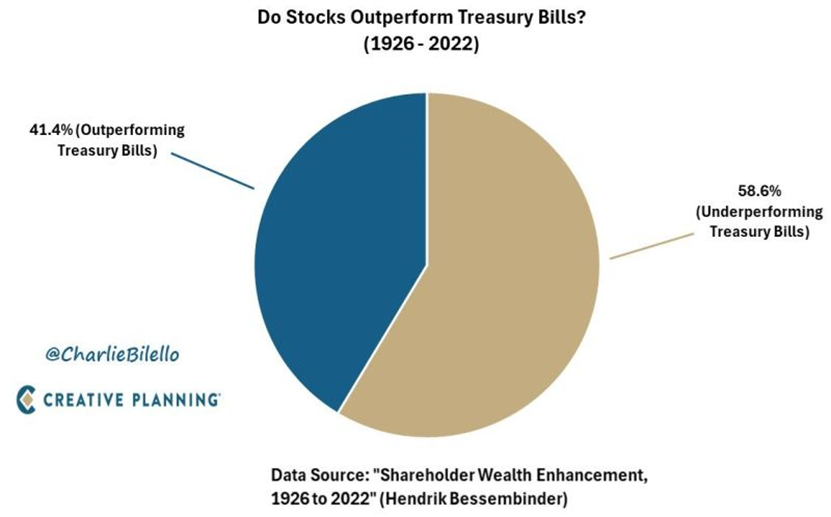
Source: Charlie Bilello, Peter Malouk
6. The Divergence in Nuclear Policy Between Germany and China
Germany decided to shut down nuclear power plants and to keep coal instead. Meanwhile, China keeps ramping up their nuclear investments.
From 2006 to 2023, China’s nuclear energy production surged by 690%, rising from 55 TWh to 435 TWh. Russia, a major fossil fuel producer, saw a 39% increase, from 156 TWh to 217 TWh.
Meanwhile, Germany’s nuclear output plummeted from 167 TWh to zero, making it the only major economy to fully phase out nuclear power. The country shut down its last nuclear plants in 2023, and 2024 marked the first year since 1962 with no nuclear electricity generation. Over the same period, global nuclear energy production (excluding Germany) grew by 3.2%, while US production remained unchanged.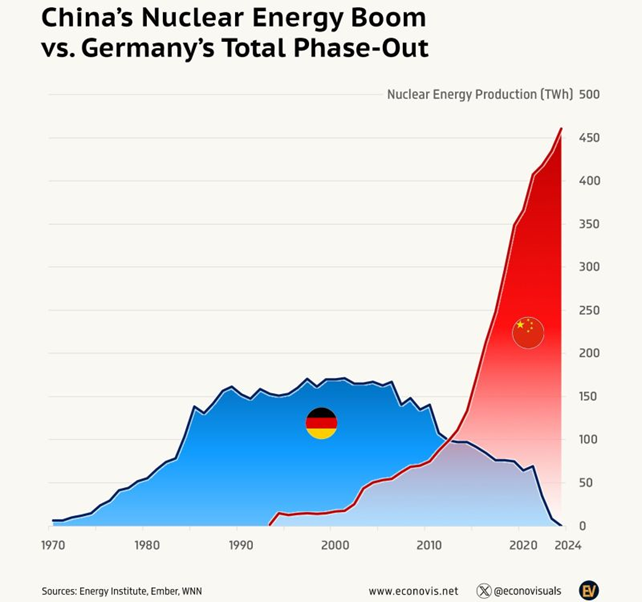
Source: Chart @econovisuals thru Michel A.Arouet on X
7. China Leads in Coal Consumption
Despite efforts to decarbonize the economy, global coal consumption surpassed 164 exajoules for the first time in 2023. The fossil fuel still accounts for 26% of the world’s total energy consumption.
In this graphic, we show global coal consumption by region from 1965 to 2023, based on data from the Energy Institute.
China is by far the largest consumer of coal, accounting for 56% of the global total, with 91.94 exajoules in 2023.
It is followed by India, with 21.98 exajoules, and the US, with 8.20 exajoules. In 2023, India exceeded the combined consumption of Europe and North America for the first time.
Regionally, North America and Europe have seen a decline in coal consumption since the 1990s, while the Asia-Pacific region experienced a surge in demand during the same period.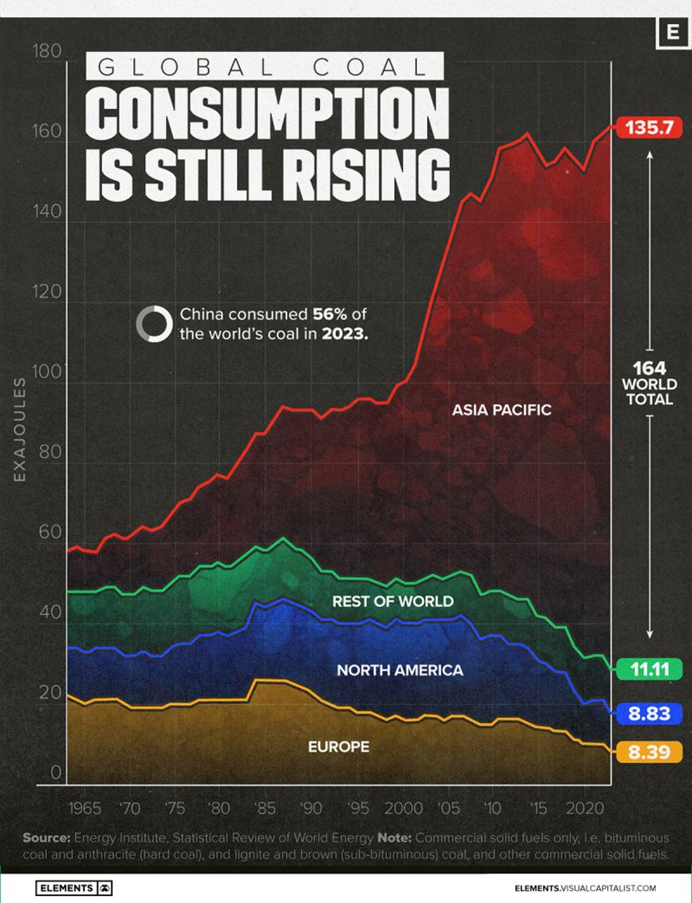
Elements, Visual Capitalist
